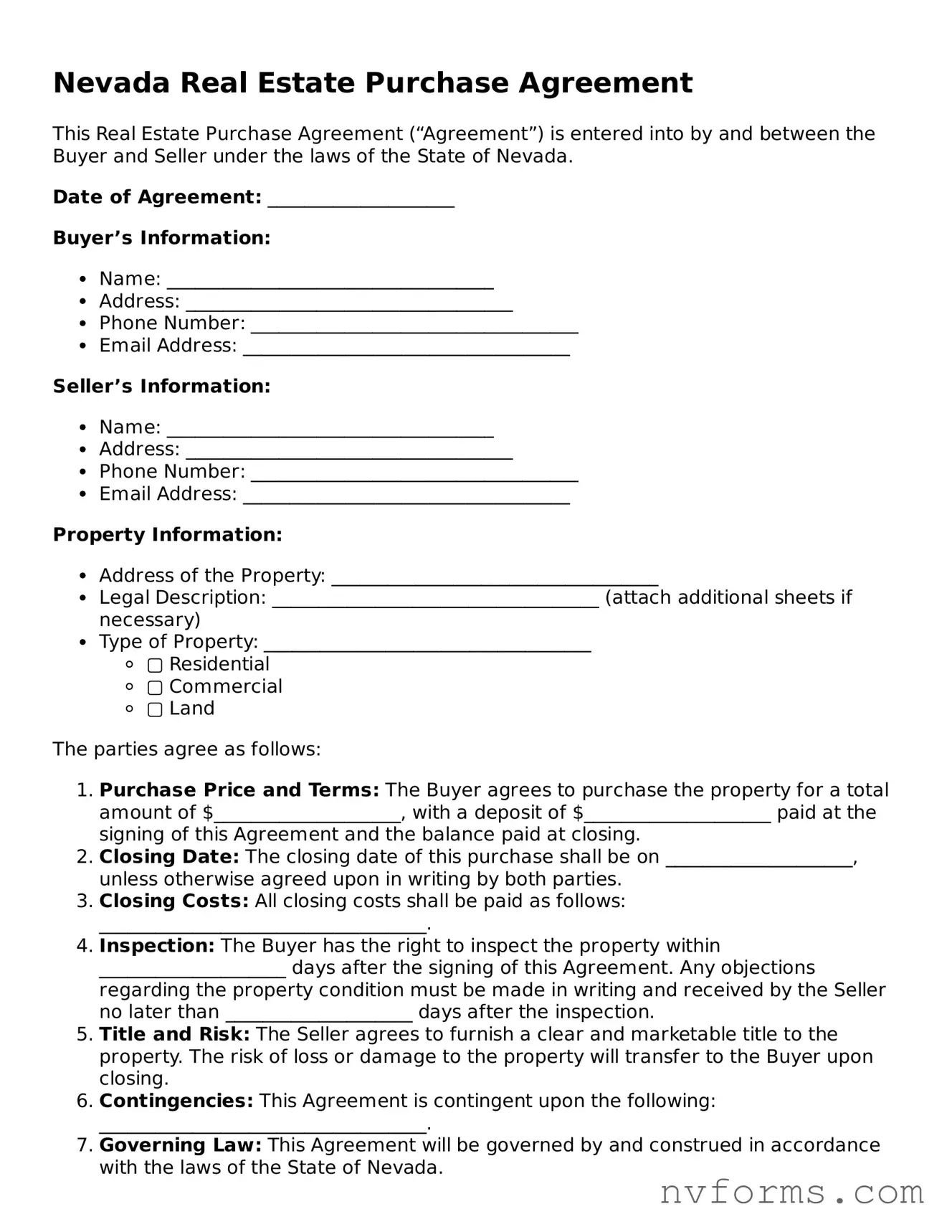Nevada Real Estate Purchase Agreement
This Real Estate Purchase Agreement (“Agreement”) is entered into by and between the Buyer and Seller under the laws of the State of Nevada.
Date of Agreement: ____________________
Buyer’s Information:
- Name: ___________________________________
- Address: ___________________________________
- Phone Number: ___________________________________
- Email Address: ___________________________________
Seller’s Information:
- Name: ___________________________________
- Address: ___________________________________
- Phone Number: ___________________________________
- Email Address: ___________________________________
Property Information:
- Address of the Property: ___________________________________
- Legal Description: ___________________________________ (attach additional sheets if necessary)
- Type of Property: ___________________________________
- ▢ Residential
- ▢ Commercial
- ▢ Land
The parties agree as follows:
- Purchase Price and Terms: The Buyer agrees to purchase the property for a total amount of $____________________, with a deposit of $____________________ paid at the signing of this Agreement and the balance paid at closing.
- Closing Date: The closing date of this purchase shall be on ____________________, unless otherwise agreed upon in writing by both parties.
- Closing Costs: All closing costs shall be paid as follows: ___________________________________.
- Inspection: The Buyer has the right to inspect the property within ____________________ days after the signing of this Agreement. Any objections regarding the property condition must be made in writing and received by the Seller no later than ____________________ days after the inspection.
- Title and Risk: The Seller agrees to furnish a clear and marketable title to the property. The risk of loss or damage to the property will transfer to the Buyer upon closing.
- Contingencies: This Agreement is contingent upon the following: ___________________________________.
- Governing Law: This Agreement will be governed by and construed in accordance with the laws of the State of Nevada.
- Amendments: Any amendments to this Agreement must be in writing and signed by both parties.
- Notices: All notices under this Agreement must be in writing and delivered either in person, via mail, or by email to the addresses provided herein.
- Entire Agreement: This Agreement constitutes the entire agreement between the parties concerning its subject matter and supersedes any prior understandings or agreements. No other understandings, promises, or representations, other than those contained here and made at the time of this Agreement, will be binding.
Signatures:
By signing below, both Buyer and Seller acknowledge and agree to all terms outlined in this Nevada Real Estate Purchase Agreement.
Buyer’s Signature: ___________________________________
Date: ____________________
Seller’s Signature: ___________________________________
Date: ____________________
